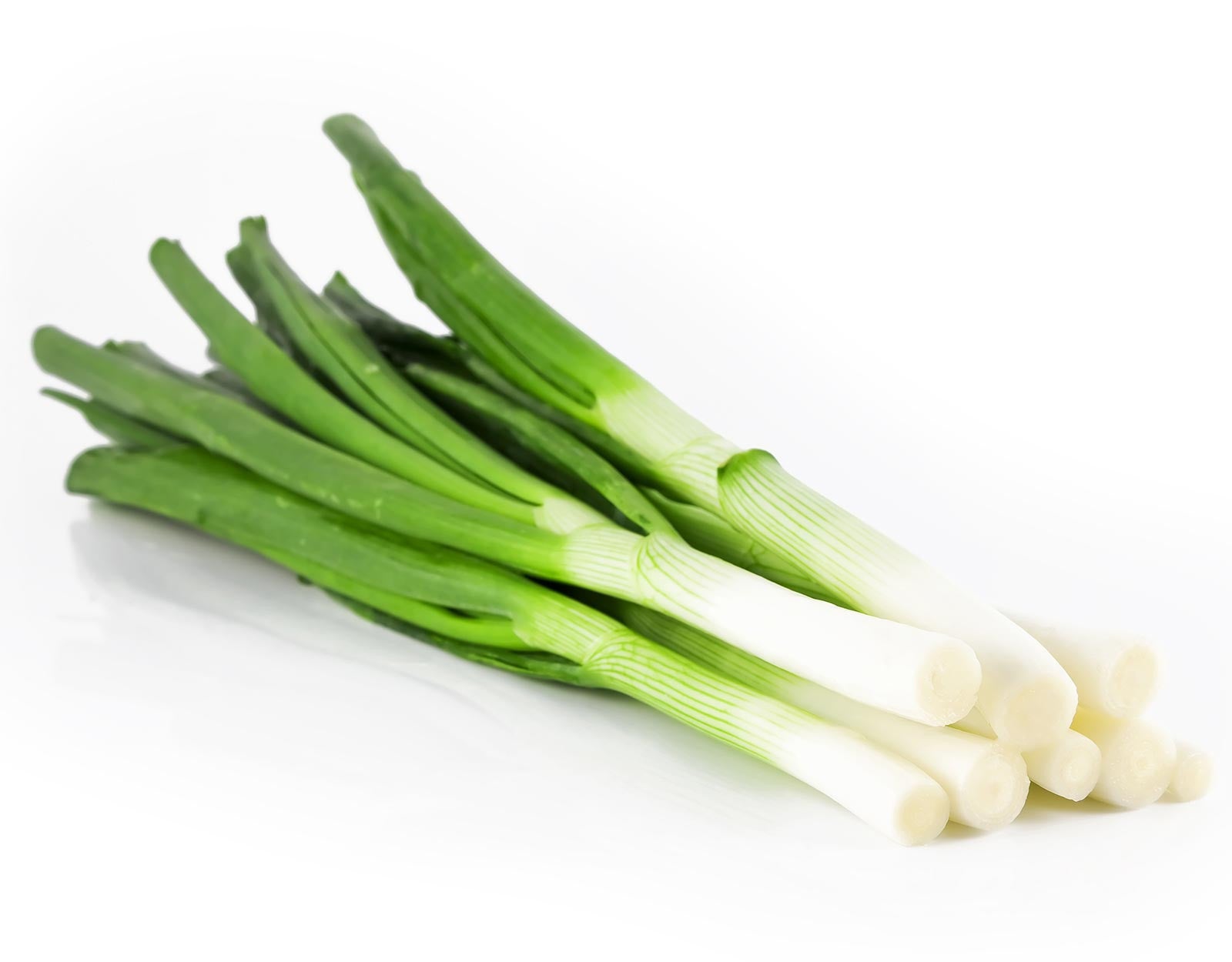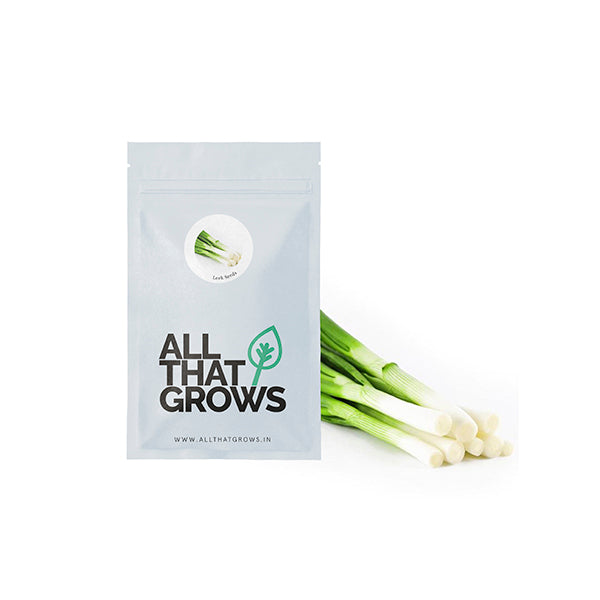



- SOWING
TIMEAugust to October
- Sowing
DistanceLine to line - 1.0'
plant to plant - 4" - Fruit
WeightN/A
- Fruit
ShapeN/A
- Days to
maturity70-80 days after transplanting
- Details
- How to sow
- Reviews
An allium vegetable, just like onion, garlic, shallots, and scallions, leeks are native to Central Asia. These are abundantly cultivated in Europe too. Sweeter, more delicate, and less pungent in taste than onions, leeks have a very subtle presence in a dish to which they are added. Leeks are full of antioxidant agents such as flavanoids which are most concentrated in the bulb and leaves adjoining it. Extremely rich in kaempferol, a flavanol that produces Nitric Oxide(NO) that dilates and relaxes blood vessels and protects them from damage. Another very important nutrient found in leeks is folate, helpful for a healthy cardiovascular system. These also comprise nutrients and minerals like Vitamin A, C, E, K, potassium, iron, magnesium, zinc, and selenium along with anti-inflammatory properties. Leeks are specially beneficial to expecting mothers as its intake reduces the chances of neural tube defects in newborns significantly.
Leek is a versatile vegetable and can be consumed in a variety of ways. Be it raw in salads, in stews and soups, in pizzas, pasta, and fried rice or simply blanched to be added to your favorite dish. Leeks can be had as and when and how you like.
Planting instructions
The easiest method is to sow seeds directly into the ground.
Seeds are best sown in rows that are 30 cm apart and around 1 cm deep. Sow seeds but not too deeply on the trench. Cover with stain, water, and label for your convenience. After 4 to 5 weeks when the seedlings have foliage, thin to leave plants every 15 cm
Growing Requirements
watering
Leeks require regular watering for optimum development and should be watered once a week by soaking the soil to a depth of around 18 inches.
pests
Problems like leaf blighting, rotting seeds that are covered in mold, discolored root tips, leaves turning pale then yellow, stunted growth, wilted leaves, fluffy white growth on the base of the bulb which spreads up to the bulb to storage leaves etc are caused by pest attacks. The pests vulnerable to this crop are - Onion white rot, Leek rust, Leek moth,Thrips, Purple blotch.
soil
Leeks prefer well-drained and rich soil, high in organic matter with an optimum pH ranging from 6.2 to 6.8.
spot
The best place for growing leeks is where they can receive plenty of sunlight.
temperature
Leek seeds germinate best at a temperature around 25 °C (77°F).
how to harvest
Leeks develop slowly and take about 100 to 120 days to reach maturity.
Leeks are ready for harvest when the stalk has reached 3.5 cm (1 in) in diameter. Once plants get to roughly the size of a pencil, you can begin harvesting them.
Harvest by carefully loosening the plant with a garden fork so as to prevent any damage.
Be sure to harvest leeks before flowering occurs.
Leeks are best used right off but can also be stacked away in the refrigerator for several weeks.

Customer Reviews
The productiveness of any seed we sell is subject to your local climatic conditions*, the sowing method you adopt, and your commitment to the planting process. We give no warranty, expressed or implied, and are in no way responsible for the produce.
Please note that all our seasonal recommendations/ sowing information is as per the local climatic conditions. *For more information on the optimum conditions required for growing seeds in your region, please contact us at, hello@allthatgrows.in or Whatsapp us at, +91 8544865077
Questions & Answers
Have a Question?
Be the first to ask a question about this.




Leek Seeds
Seed Type : Non-Hybrid, Open Pollinated and Non-GMO
Stem Colour: Long Stems With Green Color Top And Creamy White Bottom
Days to Maturity: 85 - 90 days after transplant
Stem Size: 12 TO 15 INCHES
Grow this with
An allium vegetable, just like onion, garlic, shallots, and scallions, leeks are native to Central Asia. These are abundantly cultivated in Europe too. Sweeter, more delicate, and less pungent in taste than onions, leeks have a very subtle presence in a dish to which they are added. Leeks are full of antioxidant agents such as flavanoids which are most concentrated in the bulb and leaves adjoining it. Extremely rich in kaempferol, a flavanol that produces Nitric Oxide(NO) that dilates and relaxes blood vessels and protects them from damage. Another very important nutrient found in leeks is folate, helpful for a healthy cardiovascular system. These also comprise nutrients and minerals like Vitamin A, C, E, K, potassium, iron, magnesium, zinc, and selenium along with anti-inflammatory properties. Leeks are specially beneficial to expecting mothers as its intake reduces the chances of neural tube defects in newborns significantly.
Leek is a versatile vegetable and can be consumed in a variety of ways. Be it raw in salads, in stews and soups, in pizzas, pasta, and fried rice or simply blanched to be added to your favorite dish. Leeks can be had as and when and how you like.
Seed Type : Non-Hybrid, Open Pollinated and Non-GMO
Stem Colour: Long Stems With Green Color Top And Creamy White Bottom
Days to Maturity: 85 - 90 days after transplant
Stem Size: 12 TO 15 INCHES
- SOWING
TIMEAugust to October
- Sowing
DistanceLine to line - 1.0'
plant to plant - 4" - Fruit
WeightN/A
- Fruit
ShapeN/A
- Days to
maturity70-80 days after transplanting
Planting instructions
The easiest method is to sow seeds directly into the ground.
Seeds are best sown in rows that are 30 cm apart and around 1 cm deep. Sow seeds but not too deeply on the trench. Cover with stain, water, and label for your convenience. After 4 to 5 weeks when the seedlings have foliage, thin to leave plants every 15 cm
Growing Requirements
watering
Leeks require regular watering for optimum development and should be watered once a week by soaking the soil to a depth of around 18 inches.
pests
Problems like leaf blighting, rotting seeds that are covered in mold, discolored root tips, leaves turning pale then yellow, stunted growth, wilted leaves, fluffy white growth on the base of the bulb which spreads up to the bulb to storage leaves etc are caused by pest attacks. The pests vulnerable to this crop are - Onion white rot, Leek rust, Leek moth,Thrips, Purple blotch.
soil
Leeks prefer well-drained and rich soil, high in organic matter with an optimum pH ranging from 6.2 to 6.8.
spot
The best place for growing leeks is where they can receive plenty of sunlight.
temperature
Leek seeds germinate best at a temperature around 25 °C (77°F).
how to harvest
Leeks develop slowly and take about 100 to 120 days to reach maturity.
Leeks are ready for harvest when the stalk has reached 3.5 cm (1 in) in diameter. Once plants get to roughly the size of a pencil, you can begin harvesting them.
Harvest by carefully loosening the plant with a garden fork so as to prevent any damage.
Be sure to harvest leeks before flowering occurs.
Leeks are best used right off but can also be stacked away in the refrigerator for several weeks.



 Sign In
Sign In








